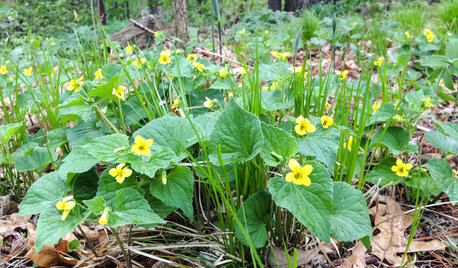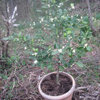moro blood orange - all leaves are yellow
jlee198
18 years ago
Related Stories

DECORATING GUIDESPaint Color Ideas: 7 Bright Ways With Yellow and Orange
Go with the glow. These sample palettes and room examples show you how to work with two of the happiest hues around
Full Story
SHOP HOUZZHouzz Products: Treat Your Rooms to Orange and Black All Year
It’s no trick. Furnishings and accessories in this bold color pairing keep spaces lively even after Halloween is over
Full Story
DECORATING GUIDES9 Easy Ways to Decorate With Autumn Leaves
Give your home a burst of color that can be used Halloween through Thanksgiving
Full Story
GARDENING GUIDESWhat's Wrong With My Plant? Leaves Often Hold the Clues
Learn how to identify common plant ailments by reading their leaves
Full Story
REMODELING GUIDESInterior Brick: Paint it or Leave It?
Here's how to know if covering that brick is a sin or solution
Full Story
LAUNDRY ROOMSRoom of the Day: The Laundry Room No One Wants to Leave
The Hardworking Home: Ocean views, vaulted ceilings and extensive counter and storage space make this hub a joy to work in
Full Story
PRODUCT PICKSGuest Picks: Awesome Orange Accents
Get into the fall spirit with lighting, pillows, vases and even furniture in the color of falling leaves
Full Story
DECORATING GUIDESInspired by Fall: Reds, Oranges and Browns at Home
Add just an accent or rake in the color with shades of autumn all over the house
Full Story
GARDENING GUIDESGreat Design Plant: Viola Pubescens Dots Woodlands With Yellow
Plant downy yellow violet in eastern U.S. woodland gardens for its heart-shaped leaves and bright yellow flowers
Full Story
COLORTake a Slice From Psychology to Use Orange Better
Get the scoop on this attention-seeking hue and learn how it can bring a refreshing zing to your interiors — and your spirit
Full StoryMore Discussions




Millet
jlee198Original Author
Related Professionals
Danbury Landscape Architects & Landscape Designers · East Rancho Dominguez Landscape Architects & Landscape Designers · Kenmore Landscape Architects & Landscape Designers · Garden City Landscape Architects & Landscape Designers · Wilmington Landscape Contractors · Centereach Landscape Contractors · El Mirage Landscape Contractors · Fairhope Landscape Contractors · Framingham Landscape Contractors · Lake Worth Landscape Contractors · Lynn Landscape Contractors · Plainview Landscape Contractors · South Lake Tahoe Landscape Contractors · St. Louis Landscape Contractors · Palos Heights Landscape Contractorsscotkight
garnetmoth
jlee198Original Author
Millet
birdsnblooms
AnotherAlterEgo
jlee198Original Author
AnotherAlterEgo
birdsnblooms
garnetmoth
Millet
AnotherAlterEgo
birdsnblooms
AnotherAlterEgo
moayediberg
garnetmoth
AnotherAlterEgo
moayediberg
garnetmoth
Patty_in_Wisc
stressbaby
AnotherAlterEgo
Millet
birdsnblooms
Patty_in_Wisc
Millet
Patty_in_Wisc
AnotherAlterEgo
Millet